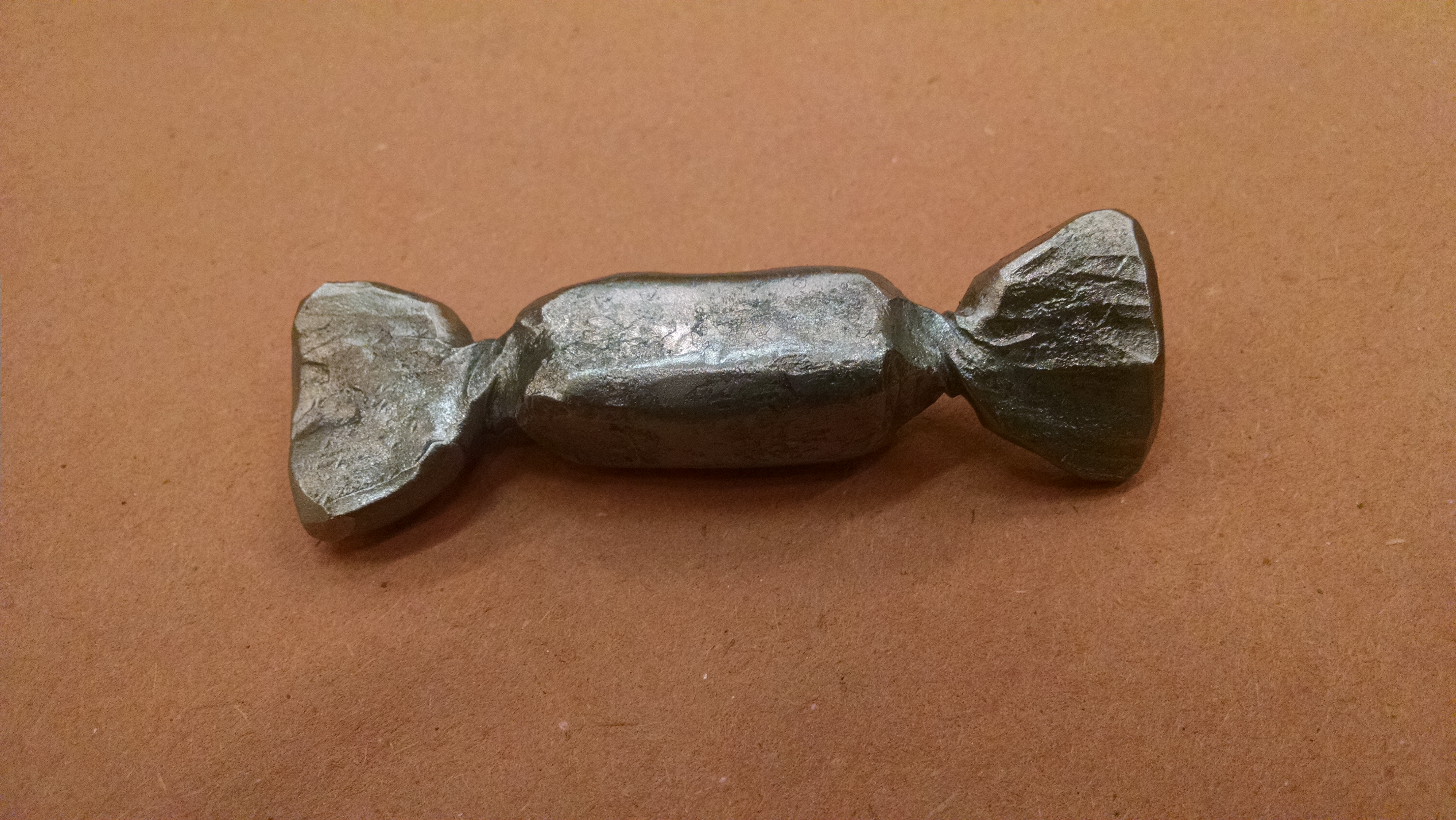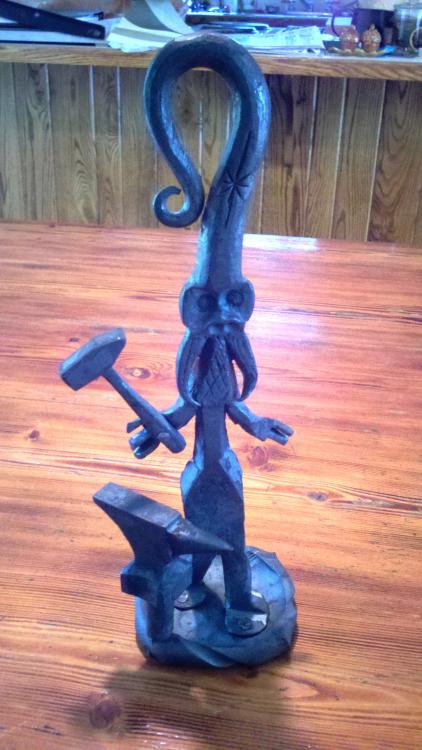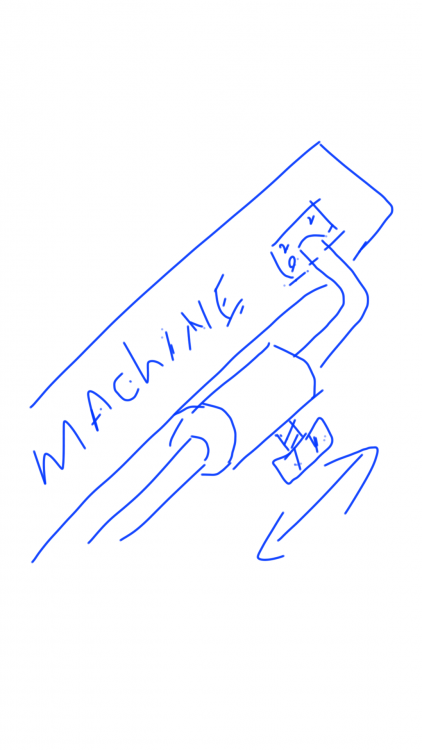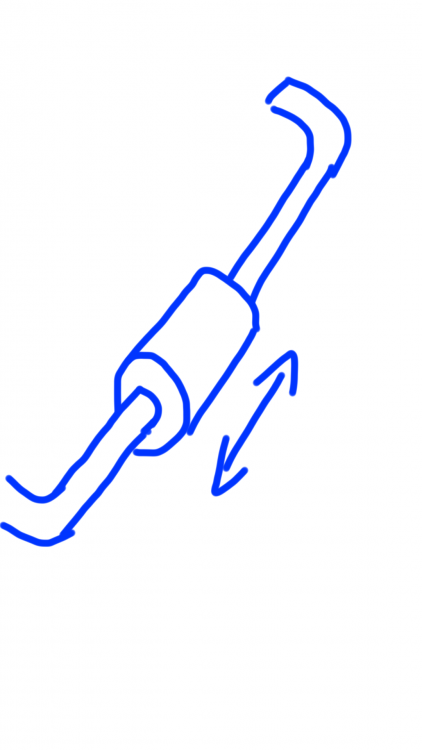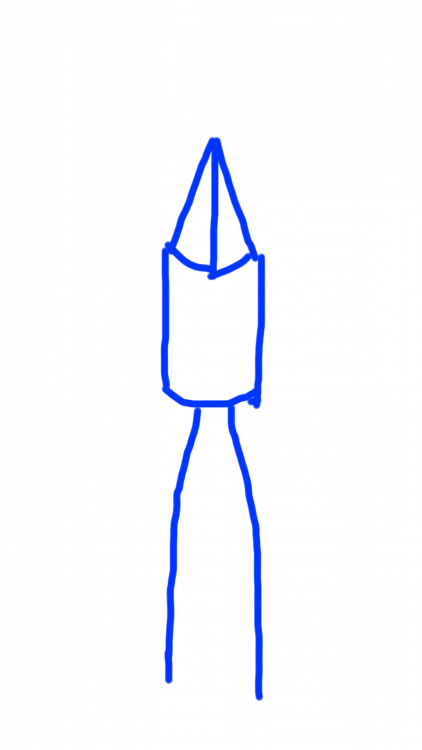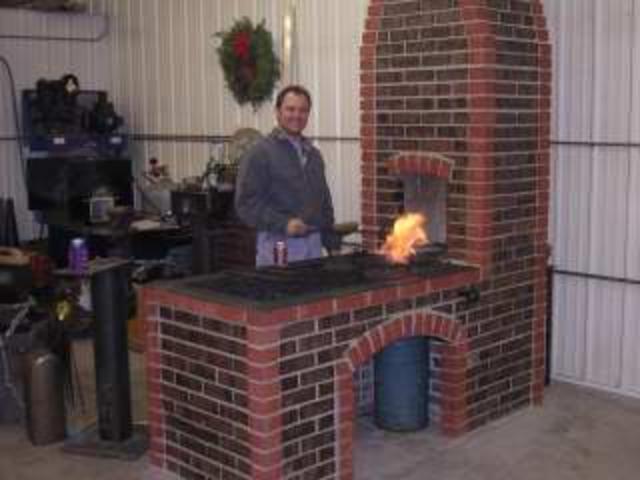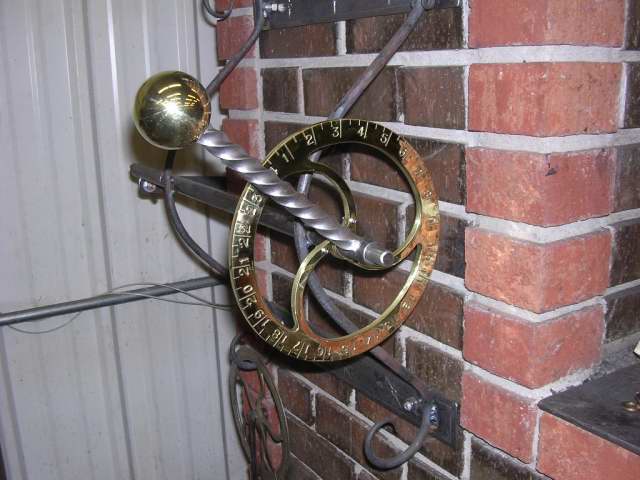-
Posts
2,405 -
Joined
Content Type
Profiles
Forums
Articles
Gallery
Downloads
Events
Everything posted by jeremy k
-
Ben - you have yourself a fine rocker that will last many lifetimes, even if abused. - Superb Job - Well Done!!! This is a perfect example of - its just small forged pieces added together to make a great forged object. The time and effort is worth a lot - just because you did!!! and it turned out Great. Enjoy your time rocking in it.
-
Doing dishes always seems to get my hands clean. Nice job on the addition to the family.
-
I was in no way directing my comment at anyone - just saying how I myself view this mishap. I have gotten wrong items that were not what I ordered, and after contacting every company that I've had this happen with, All have remedied the situation with no quarrels. And I still purchase from all of them to this day. Things like this are a very minor speed bump in life, to me anyway.
-
I wouldn't be concerned with "Who" the supplier is, as long as they corrected the error, mainly as a miss shipped order can easily happen to anyone, anywhere. Yes it's an inconvenience, but it happens, no reason to publicly chastise a company over a minor mistake that they are correcting.
-
Contoured copper seat would be a great accent to the fine metalwork you've done.
-
I would rather take the time to not let it happen (a weld or wire getting into a pattern) in the first place, Vs. all the time and effort to making a patterned billet and getting it all done and ground and then to see a flaw that could have been easily prevented first off. Just my preference.
-
Wiring a billet together to hold the stack is used when one does not want to introduce a miss matched metal into the stack by welding. One puts the wire a couple inches back from one end, so that the stack can be welded on the end without touching the wire or forge welding it into the billet. After the first weld at the end of the billet the wire is removed so more welding can be done. Depending on the length of the starting billet one may use 2-3 wires spaced out to hold pieces in place. On 6" billets I've only used 1 wire on tong end and the other a couple inches back from the other end then remove as you set your welds, just the way I was shown and it has worked for me.
-
Ken had a vendor spot and I was just helping him demo his hammer.
-
Jim, I also like your blacksmith figure, here is one I forged mostly using a KZ150 air hammer at the last ABANA conference in South Dakota. About the only hand hammering done was riveting parts together. Couple of the fingers got sacrificed due to working a tad bit to cold and broke off, I started with 1-1/2" square stock for the wizard.
-
Joel - I agree with you as long as there is adjustments on the punch press - as you said no machine is a fix all - but like I said they can be used in ways that can accomplish things one wouldn't think of as their normal use. As in the above picture - the "punched/drifted holes" on 3-1/2" pipe - was done with my hydraulic press.....how - not punched/drifted - but Pulled. Opposite of normal thinking of a press.
-
It's kind like using a hydraulic press to make this 7 ft tall anchor I made years ago, you can fool the machine to do things it didn't know it could do. As in the picture....making swelled hot punching openings in 3-1/2" pipe. And texturing pipe to look like texture on solid stock, and curving pipe.......all done on a 24 ton hydraulic press.
-
Thomas, I really don't think that was Joel's intent, as saying it will do what a power hammer will do , more in that it can be used for forging in general. And yes, it may include some adjustments.
-

traditional Nepalese blacksmiths and forges.
jeremy k replied to Gubilok tennerman's topic in Knife Making
Marc - actually most posts like this is to show how simply blacksmithing can be done with minimal equipment, lots of new guys think they need presses, power hammers, all the fancy stuff before they know how metal moves with just a hand hammer, as has been done for way longer than any powered equipment. There are thousands of people doing great work with a hand hammer only, no power hammer etc. Just because someone wants to do pattern welded billets for knives is no reason to have to buy a power hammer or a press, a hand hammer works great, as many great knife makers on this site already do.....by hand. -
MY guess is that Joel is using his punch press - knowing it's limits and using it well within the stroke limits to texture red hot metal. The key is - like I said - knowing the limits and not "crashing the machine" during use - its all in the settings. I'm on Joel's side - they can be used for forging. They are not - power hammers or hydraulic forging presses - but can be used for specialized things with the correct adjustments. In Michael's case - forget the press, power hammer etc. all can be done with a hand hammer like thousands of people are doing already (making pattern billets for knives).
-
From the picture, it looks like you need to hone the edge on a sharpening stone buy hand, it's very easily done for a sharp edge.
- 40 replies
-
- sharpening
- knifemaking
-
(and 2 more)
Tagged with:
-

Aftermarket Bandsaw Hydraulic?
jeremy k replied to edennis's topic in Saws, bandsaws, hack saws, etc
Mount bar on frame and adjust weight back and forth for pressure adjustment. Depends on the saw if it's blade heavy your weight should slide rear of pivot to help counter the blade side weight. A small cylinder is also just as easy to mount- 13 replies
-

Aftermarket Bandsaw Hydraulic?
jeremy k replied to edennis's topic in Saws, bandsaws, hack saws, etc
- 13 replies
-
Dave, you are correct, in that more than a blunt tip will cause problems, also it's easy to get the body behind the blunt tip to long also. Try keeping the body under the blunt tip, pre shape approximately 1-1/2 times the thickness of the bar. Use this as a starting point and adjust the length after you make a few and see how that goes.
-

Murdoch's 1st furnace
jeremy k replied to GMURDOCH's topic in Smelting, Melting, Foundry, and Casting
Why not just purchase some, I now shipping to Canada is an issue but you'd probably have to ship the ingredients anyway, would it not be easier to go with a commercial mix that is tried and true, it's really not that expensive for what you get out of it.???? Just asking. -
Dave, glad your having some luck, keep practicing, like most forgings - once you get to the 75 pc mark, you end up fairly consistent and things start looking the same when you compare side by side.
-

Shop Cleaning Question - Magnetic Floor Mats?
jeremy k replied to Meridianfrost's topic in Blacksmithing, General Discussion
Speaking of those pesky wire wheel wires - Ive always wire wheeled in the middle of the shop (36x54) and one day after a large railing job - while opening the sliding door that is insulated with 2" foam board - I noticed these little partially rusted wires stuck in the foam, They were from wire wheeling the railing - All over the door (16ft wide slider) - so they went thru the air 15ft or more to hit and stick in the foam insulation - I just looked at that and said to myself - WOW!!!! - found them stuck in a sweatshirt I wear doing that days after being done with projects - they do get everywere. I try to do a full look over on clothes before leaving the shop - as I have also found them in the house and even still stuck in my flesh. -
Brick, controls can be run from both sides - depending on what LG Power hammer I need to use. Forge controls are designed to resemble a blacksmith/wheelwright "traveler".
-
Mount it on a stand like other swage blocks, so it can lay flat or on edge, depends on how you make the stand.
-
lukerec, I have one exactly like that, but not so worn so as to have the "v" shape cut in it, it's been sitting outside the shop for about 4 years now. I haven't had a use for it yet.
-
Hummmm. Underwater forging.....never thought of that.
